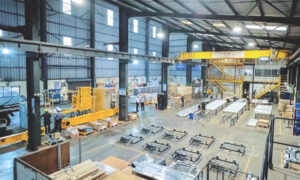The overcast weather common in the colder months tends to trap pollution beneath the cloud with warm air acting as a lid, covering and trapping air pollutants closer to the ground.
It is iconic and imperative for people to embark on their day and year with an innovative health and fitness regime with suitable and superlative resolutions. Everyone wants to start with training, yoga, eating fresh but no one thinks about breathing ‘clean air’, people often ignore the importance of clean air that is required to stay on top of those resolutions and the fact is that air quality inside your home or indoor scan be less than delightful especially during the winter months.
So, what happens in winter months to indoor air? A phenomenon called ‘temperature inversion’ is more common in winter. This is where temperature increases with height – can exacerbate outdoor air pollution.
For example, some pollutants, such as ozone and nitrogen dioxide found in vehicle exhaust fumes, can react with ‘off-gassing’ building materials and furniture as well as with cleaning chemicals, creating compounds like formaldehyde that make indoor air even more toxic.
It’s an illustion that only external factors are harmful, festive activities can also release pollutants indoor. For example, burning candles, heating (particularly with wood burning stoves) and cooking release smoke and inhaling any smoke is harmful.
The British Lung Foundation (BLF) cautions that heating and cooking can release two types of pollutants – particulate matter (microscopic particles of dust and dirt in the air) and gases (including carbon monoxide, nitrogen oxides and sulphur dioxide). Exposure to any of these pollutants can lead to lung and heart disease.
The BLF warns: “Once these pollutants are indoors, it’s essential to purify your home with fresh air from the outside to dilute and remove them. That’s why gas heaters and cookers that have a flue, chimney, or other kind of vent that allows the polluted air out of your home, are better for lung health.”
Indeed, it’s important to stay vigilant about maintaining good indoor hygiene all year round, it pays special attention when planning actions or hunkering down during the cold, dry winter months.
For example, chimneys from solid fuel stoves and fireplaces need to be cleaned and swept regularly by a registered sweep. Other important measures include:
- Ensure gas appliances are maintained and services by a certified engineer annually.
- Always operate a stove in line with the manufacturer’s guidance and only burn permitted fuels, including ‘Ready to Burn’ logs.
- Install extractor fans over gas stoves and ranges, and always use them.
- Install alarms for both smoke and carbon monoxide.
- Avoid sprays wherever possible. Instead consider using solid or liquid cleaning products.
- Ventilate the home adequately and always open a window when cleaning or decorating.
- If you really want to ensure safety – particularly for homes where occupants have allergies – consider in room air purification. Also, when planning gym, yoga or indoor fitness classes in order to stay focused on your New
- Year’s goals keep in check that suitable air purification systems are used by the facilities.
For details, visit:
www.camfil.com
www.woodsure.co.uk
Cookie Consent
We use cookies to personalize your experience. By continuing to visit this website you agree to our Terms & Conditions, Privacy Policy and Cookie Policy.















